

SPAWC 2024 is hosting the following SPAWC talks, focusing on hot topics in signal processing for wireless communications, and to be held in the Plenary room:
SPAWC Talk 1: Modelling language mismatch in multi-user semantic communications
Speaker: Emilio Calvanese Strinati (CEA LETI, France)
Wednesday Sept. 11, 14:00 – 14:30
SPAWC Talk 2: Quantum error correction for communications and computing
Speaker: Marco Chiani (University of Bologna, Italy)
Wednesday Sept. 11, 14:30 – 15:00
SPAWC Talk 3: UAV networks: Quantization for deployment not compression
Speaker: Hamid Jafarkhani (University of California at Irvine, USA)
Wednesday Sept. 11, 16:30 – 17:00
SPAWC Talk 4: Beamforming design for integrated sensing and communications using uplink-downlink duality
Speaker: Wei Yu (University of Toronto, Canada)
Thursday Sept. 12, 16:30 – 17:00
SPAWC Talk 5: Scalable, robust, and distributed algorithms for large antenna array processing
Speaker: Danijela Cabric (University of California at Los Angeles, USA)
Thursday Sept. 12, 17:00 – 17:30
SPAWC Talk 6: In-memory computing – The key to efficient AI accelerators
Speaker: Bipin Rajendran (King’s College London, United Kingdom)
Friday Sept. 13, 14:00 – 14:30
SPAWC Talk 7: Towards optimal pilot spacing in multi-antenna systems operating over aging channels
Speaker: Gábor Fodor (Ericsson Research, Sweden)
Friday Sept. 13, 14:30 – 15:00
SPAWC Talk 8: Near-field radio localization and mapping with intelligent surfaces
Speaker: Anna Guerra (National Research Council, Italy)
Friday Sept. 13, 16:30 – 17:00
SPAWC talks details
Scalable, robust, and distributed algorithms for large antenna array processing
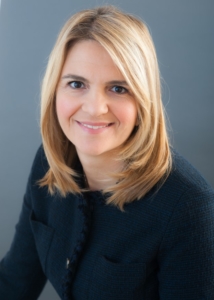
Abstract: While the past two decades have witnessed the successful application of multiple-input-multiple-output (MIMO) systems, the next-generation wireless systems are targeting even larger antenna arrays for higher spatial-multiplexing gain and joint communication and sensing capabilities. In this talk we will consider super-resolution sensing problems arising in multi-antenna signal processing and propose a low-complexity solution using iterative coordinate descent method. The algorithm can be applied to a wide range of classic array processing problems such as adaptive beamforming or sparse reconstruction. In addition to reducing computational complexity, the proposed method can be implemented using distributed architecture to overcome massive data sharing problem in digital array processing.
Bio: Danijela Cabric is a Professor in the Electrical and Computer Engineering Department at the University of California, Los Angeles. She received M.S. from the University of California, Los Angeles in 2001 and Ph.D. from University of California, Berkeley in 2007, both in Electrical Engineering. In 2008, she joined UCLA as an Assistant Professor, where she heads Cognitive Reconfigurable Embedded Systems lab. Her current research projects include novel radio architectures, signal processing, communications, machine learning and networking techniques for spectrum sharing, 5G millimeter-wave, massive MIMO and IoT systems. Prof. Cabric was a recipient of the Samueli Fellowship in 2008, the Okawa Foundation Research Grant in 2009, Hellman Fellowship in 2012 and the National Science Foundation Faculty Early Career Development (CAREER) Award in 2012, and Qualcomm Faculty Award in 2020 and 2021. Prof. Cabric is an IEEE Fellow.
Modelling language mismatch in multi-user semantic communications
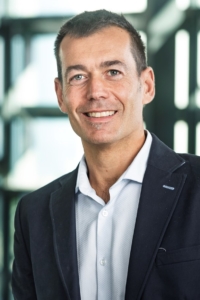
Abstract: In this talk we present our latest results on semantic communications. We consider a multi-user semantic communications system in which agents (transmitters and receivers) interact through the exchange of semantic messages to convey meanings. In this context, semantic languages are instrumental in structuring the construction and consolidation of knowledge, influencing conceptual representation and semantic extraction and interpretation. Yet, the crucial role of languages in semantic communications is often overlooked. When this is not the case, agent languages are assumed compatible and unambiguously interoperable, ignoring practical limitations that may arise due to language mismatching. This is the focus of this work. When agents use distinct languages, message interpretation is prone to semantic noise resulting from critical distortion introduced by semantic channels. To address this problem, this paper proposes a new semantic channel equalizer to counteract and limit the critical ambiguity in message interpretation. Our proposed solution models the mismatch of languages with measurable transformations over semantic representation spaces. We achieve this using optimal transport theory, where we model such transformations as transportation maps. Then, to recover at the receiver the meaning intended by the teacher we operate semantic equalization to compensate for the transformation introduced by the semantic channel, either before transmission and/or after the reception of semantic messages. We implement the proposed approach as an operation over a codebook of transformations specifically designed for successful communication. Numerical results show that the proposed semantic channel equalizer outperforms traditional approaches in terms of operational complexity and transmission accuracy.
Bio: Dr. Emilio Calvanese Strinati obtained his Ph.D in 2005 from Paris Telecom. He then started working at Motorola Labs in Paris in 2002. In 2006 he joint CEA LETI as a research engineer. From 2010 to 2012, he has been the co-chair of the wireless working group in GreenTouch Initiative, which deals with design of future energy efficient communication networks. From 2016 to 2020 he was the Smart Devices’ Telecommunications Scientific and Innovation Director. Since February 2020 he is the Nanotechnologies and Wireless for 6G (New-6G) Program Director focusing on future 6G technologies. He has published around 200 papers in journals, international conferences, and books chapters, and he has given more than 200 international invited talks, keynotes and tutorials. He is the main inventor of more than 80 patents. His current research interests are on Reconfigurable Intelligent Surfaces, Semantic communications, Goal-oriented communications AI-native technologies for 6G.
Quantum error correction for communications and computing
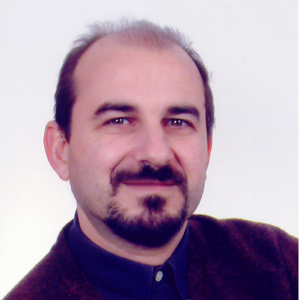
Abstract: Classical error-correcting codes are fundamental for protecting information from noise and interference, and they are ubiquitous in communications and computing. Typical classical “noise” models include bit-flips (for example, “00101100” ⇒ “01101100”), bit-erasures (for example, “00101100” ⇒ “0?101100”), and AWGN (Additive White Gaussian Noise). In quantum computing and communication systems, due to the inevitable interactions with the environment and the difficulties in processing quantum information, the mitigation of noise is even more important. After a brief introduction to quantum information, the talk will present the main quantum noise models and the key ideas for quantum error correction, highlighting the main differences from the classical case and the current status of their development.
Bio: Marco Chiani is a Professor in telecommunications at the University of Bologna. He received the Dr. Ing. degree in electronic engineering and the Ph.D. degree in electronic and computer engineering from the University of Bologna, Italy, in 1989 and 1993, respectively. Since 2003, he has been a frequent visitor at the Massachusetts Institute of Technology (MIT), Cambridge, MA, USA, as Research Affiliate. He is an IEEE Fellow, and has been appointed Distinguished Visiting Fellow of the Royal Academy of Engineering, U.K. He received the 2011 IEEE Abraham Prize, the 2012 IEEE Ellersick Prize, and the 2012 IEEE Rice Prize in the Field of Communications Theory. He has been the Chair (2002–2004) of the Radio Communications Committee of IEEE CommSoc. His research interests are in the areas of information theory, wireless systems, statistical signal processing and quantum information. His contributions include also exponential bounds for the Gaussian error function, and the statistical distribution of the eigenvalues of random matrices.
Towards optimal pilot spacing in multi-antenna systems operating over aging channels
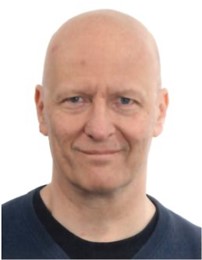
Abstract: Minimizing the symbol error and maximizing the spectral efficiency over time-varying channels are challenging, since channel state information inaccuracies negatively affect the performance of adaptive algorithms. Specifically, time-varying channels give rise to channel aging, which calls for carefully designing pilot spacing and acquiring channel state information between estimation instances. In this talk, we address four key aspects of the design and performance analysis of systems operating over aging channels. First, we discuss some modeling approaches to capture the behavior of stationary and non-stationary time-varying channels. Next, we look at channel estimation techniques that help to acquire proper channel state information and show how they affect the achievable spectral efficiency of multiple antenna systems. Finally, we show how the well-known concept of the deterministic equivalent signal-to-interference-plus-noise ratio can be extended to time-varying channels, which facilitates the performance analysis and of systems operating over aging channels using closed or quasi-closed form expressions and analytical results. We demonstrate the achievable gains due these techniques by numerical examples.
Bio: Gábor Fodor received the Ph.D. degree from the Budapest University of Technology and Economics in 1998 and the D.Sc. degree from the Hungarian Academy of Sciences in 2019. He is currently a Master Researcher with the Ericsson Research and a Docent and Adjunct Professor with the KTH Royal Institute of Technology, Sweden. He has authored more than 150 journal and conference papers, seven book chapters and holds more than 200 granted patents. He was the Founder and Chair of the IEEE Communications Society Emerging Technology Initiative on Full Duplex Communications and a co-recipient of the IEEE Communications Society Stephen O. Rice Prize in 2018, and the Best Student Conference Paper Award from the IEEE Sweden VT/COM/IT Chapter in 2018. He has served as Editor for IEEE Transactions of Wireless Communications and as a Guest Editor for IEEE Journal on Selected Areas in Communications ,and was an Exemplary Editor for IEEE Wireless Communications in 2022. He is currently an Associate Editor in Chief for IEEE Communications Magazine.
Near-field radio localization and mapping with intelligent surfaces
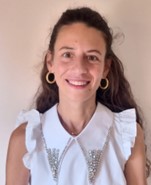
Abstract: The next generation of cellular networks promises to revolutionize wireless communication by creating smart radio environments (SREs) through the use of reconfigurable intelligent surfaces (RISs). These RISs offer significant benefits, including the ability to optimize the radio channel for specific applications, thereby enhancing overall system performance. For instance, RIS elements can be reconfigured to achieve precise localization and sensing, while simultaneously improving communications in cellular networks. Additionally, with the adoption of large aperture arrays and high frequencies, the traditional plane wave approximation, which is valid in the far field, becomes inadequate. In these scenarios, cellular users are likely to be positioned in the near field relative to base stations and RISs. The resulting wavefront curvature allows for the extraction of both distance and angle-of-arrival information, enabling more accurate source localization with fewer deployed devices (single-anchor localization). This seminar will present recent advancements in near-field localization and sensing for next-generation communication systems. It will begin by exploring the localization fundamental localization limits in RIS-aided systems, followed by a review of algorithms designed for imaging and tracking mobile users. The seminar will also show how optimizing the phase profile of RISs can significantly impact localization performance.
Bio: Anna Guerra has been with the National Research Council (CNR) of Italy since 2021. She earned a Ph.D. from the University of Bologna in 2016. Her research interests include radio localization and mapping, smart radio environments, and distributed signal processing for autonomous agent networks. From 2016 to 2021, she was awarded a global Marie Skłodowska-Curie research fellowship for the H2020 AirSens project. As part of this fellowship, she visited Stony Brook University (Stony Brook, NY, USA). In 2023, she obtained an ERC Starting Grant fellowship for the CUE-GO project. She received the Best Student Paper Award at the IEEE ICUWB 2014 (Paris, France) and the Best Paper Award at the IEEE RFID-TA 2019 (Pisa, Italy), and at the IEEE ICAS 2021 (Montreal, QC, Canada). She is currently an Associate Editor for IEEE Transactions on Wireless Communications, IEEE Communications Letters, and IEEE Wireless Communications Letters.
UAV networks: Quantization for deployment not compression
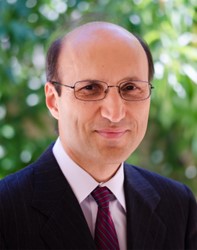
Abstract: Next generation of wireless networks are envisioned to be highly heterogeneous and include flying nodes like UAVs as users, base stations, relays, and sensors. We consider the deployment and trajectory optimization of UAV networks and adapt quantization theory to address the corresponding challenges. We will also discuss the optimization of the existing cellular networks for supporting legacy ground users and UAV corridors using quantization theory.
Bio: Hamid Jafarkhani is a Chancellor’s Professor at the University of California, Irvine, where he is also the Director of Center for Pervasive Communications and Computing and the Conexant-Broadcom Endowed Chair. He was a Visiting Scholar at Harvard University in 2015 and at California Institute of Technology in 2018. Dr. Jafarkhani was an IEEE ComSoc Distinguished lecturer. Among his awards are the IEEE Marconi Prize Paper Award in Wireless Communications, the IEEE Communications Society Award for Advances in Communication, the IEEE Wireless Communications Technical Committee Recognition Award, the IEEE Signal Processing and Computing for Communications Technical Recognition Award, and the IEEE Eric E. Sumner Award. He is the 2017 Innovation Hall of Fame Inductee at the University of Maryland’s School of Engineering. According to the Thomson Scientific, he is one of the top 10 most-cited researchers in the field of “computer science” during 1997-2007. He is a Fellow of AAAS, an IEEE Fellow, and the author of the book “Space-Time Coding: Theory and Practice.”
In-memory computing – The key to efficient AI accelerators
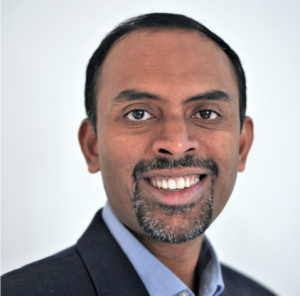
Abstract: Hardware performance plays a key role in determining which algorithmic ideas can succeed in the real world, this is all the more true in the era of AI models featuring billions of parameters. A major efficiency limiting factor in training/inference with large AI models is the von Neumann bottleneck due to the physically separated memory and compute units in today’s computing platforms. For example, accessing 2 bytes of data from DRAM costs approximately 3000 times more energy than an ADD operation at 45 nm technology. In-memory computing (IMC) paradigm has the potential to address this challenge as certain frequent computations such as matrix-vector multiplications needed for AI models can be performed in memory without transferring the data to the processor. In this talk, I will present a brief overview of the challenges and research directions currently being pursued to build IMC-based AI accelerators. I will also describe our work demonstrating the feasibility of IMC accelerators based on nanoscale memristive technologies projected to achieve over a 100-fold improvement in computational efficiency compared to CMOS accelerators.
Bio: Bipin Rajendran is a Professor of Intelligent Computing Systems and EPSRC Fellow at King’s College London (KCL). He received a B. Tech degree from I.I.T. Kharagpur in 2000, and MS and PhD degrees in Electrical Engineering from Stanford University in 2003 and 2006, respectively. He was a Master Inventor and Research Staff Member at IBM T. J. Watson Research Center in New York from 2006-’12 and has held faculty positions in India and the US. His research focuses on building algorithms, devices, and systems for brain-inspired computing. He has co-authored over 100 papers in peer-reviewed journals and conferences, one monograph, one edited book, and 59 issued U.S. patents. He is a recipient of the IBM Faculty Award (2019), IBM Research Division Award (2012), and IBM Technical Accomplishment (2010). He was elected a senior member of the US National Academy of Inventors in 2019.
Beamforming design for integrated sensing and communications using uplink-downlink duality
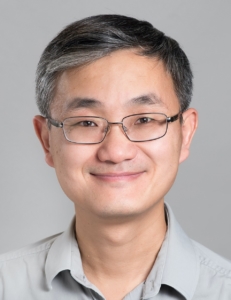
Abstract: In this talk, I will present a novel optimization framework for beamforming design in integrated sensing and communication systems where a base station seeks to minimize the Bayesian Cramér-Rao bound of a sensing problem while satisfying quality of service constraints for the communication users. The proposed optimization framework comprises two key new ingredients: a transformation of the Cramér-Rao bound minimization problem into an equivalent max-min formulation that offers a novel understanding of the sensing objective, and an extension of the classical duality result between uplink and downlink for multiple-input multiple-output communications to the ISAC setting. Combining these two ideas results in a considerably more efficient iterative procedure for solving the optimal beamforming problem for ISAC than the previous semidefinite relaxation approach, and with provable convergence to global optimal solution under mild conditions.
Bio: Wei Yu is a Professor of Electrical and Computer Engineering at the University of Toronto, where he holds a Canada Research Chair in Information Theory and Wireless Communications. He received the B.A.Sc. degree in computer engineering and mathematics from the University of Waterloo, and the M.S. and Ph.D. degrees in electrical engineering from Stanford University. Prof. Wei Yu is a Fellow of IEEE and a Fellow of the Canadian Academy of Engineering. He received the IEEE Communications Society and Information Theory Society Joint Paper Award in 2024, the IEEE Marconi Prize Paper Award in Wireless Communications in 2019, the IEEE Communications Society Award for Advances in Communication in 2019, the IEEE Signal Processing Society Best Paper Award in 2008, 2017 and 2021, and the IEEE Communications Society Best Tutorial Paper Award in 2015. Prof. Wei Yu served as the President of the IEEE Information Theory Society in 2021. He is a Clarivate Highly Cited Researcher (2023).
Local Committee
Signal Processing Advances in Wireless Communications
![]()
Platinum Sponsor

Organizing Secretariat
First Class Meetings and Conferences

